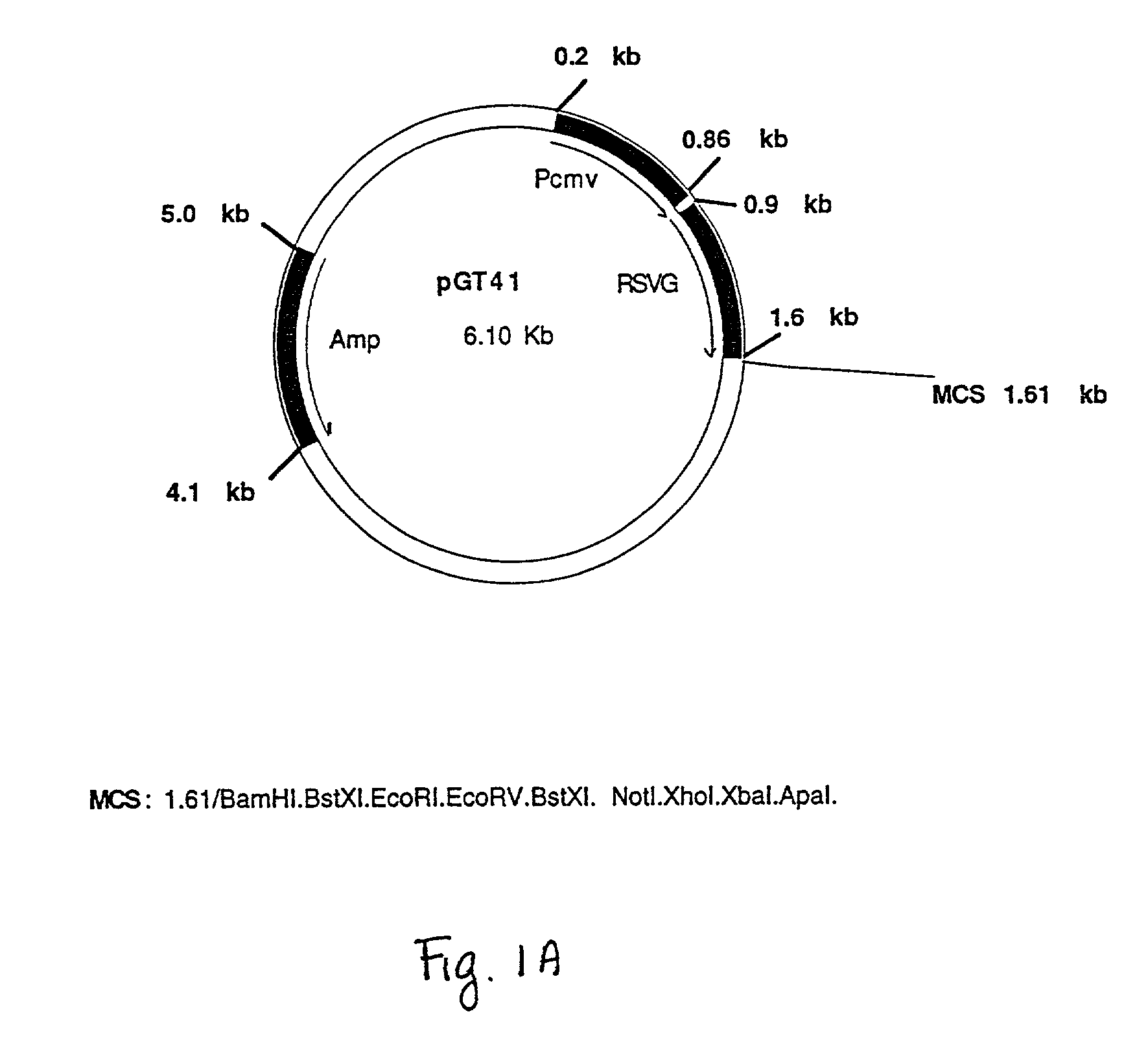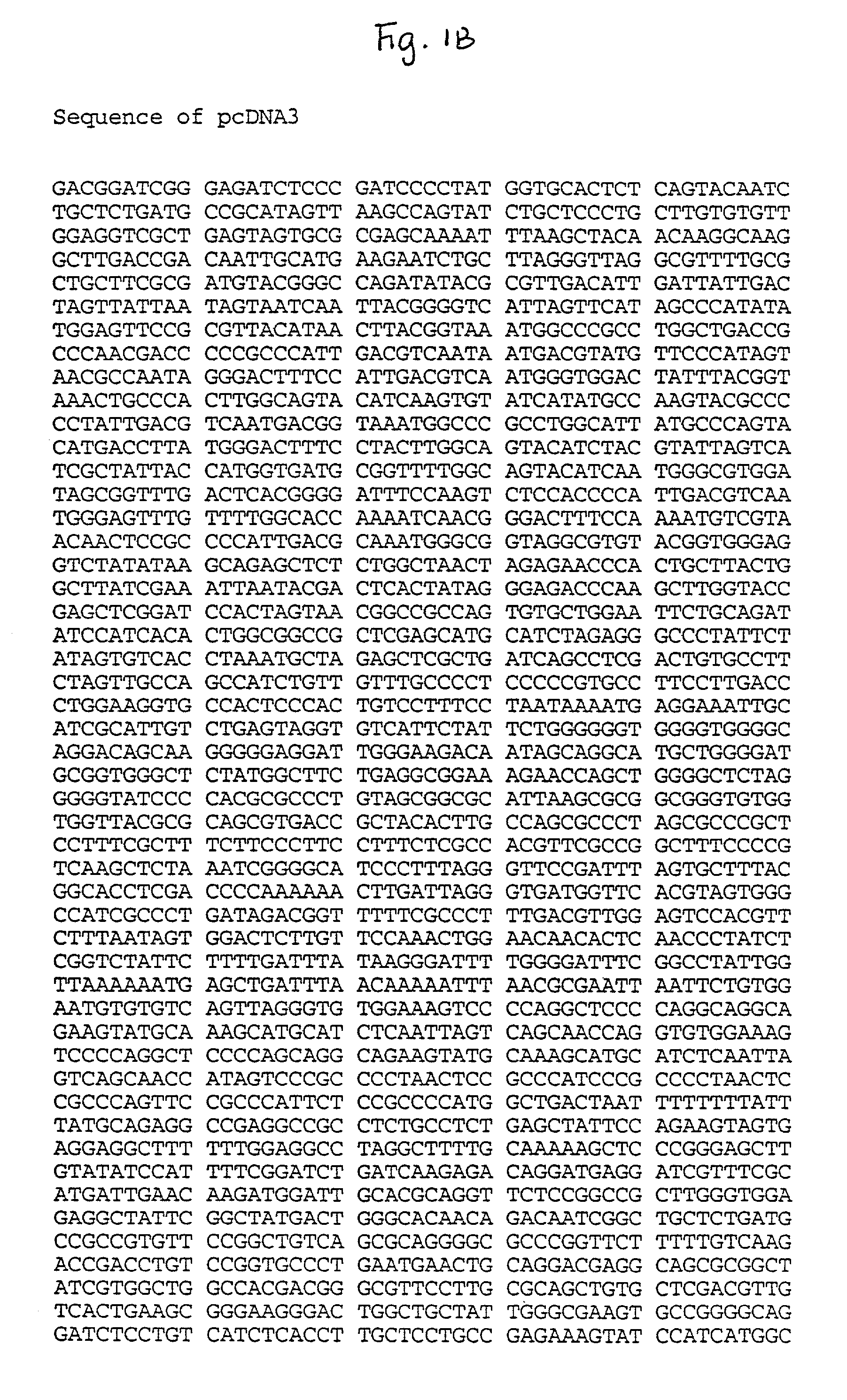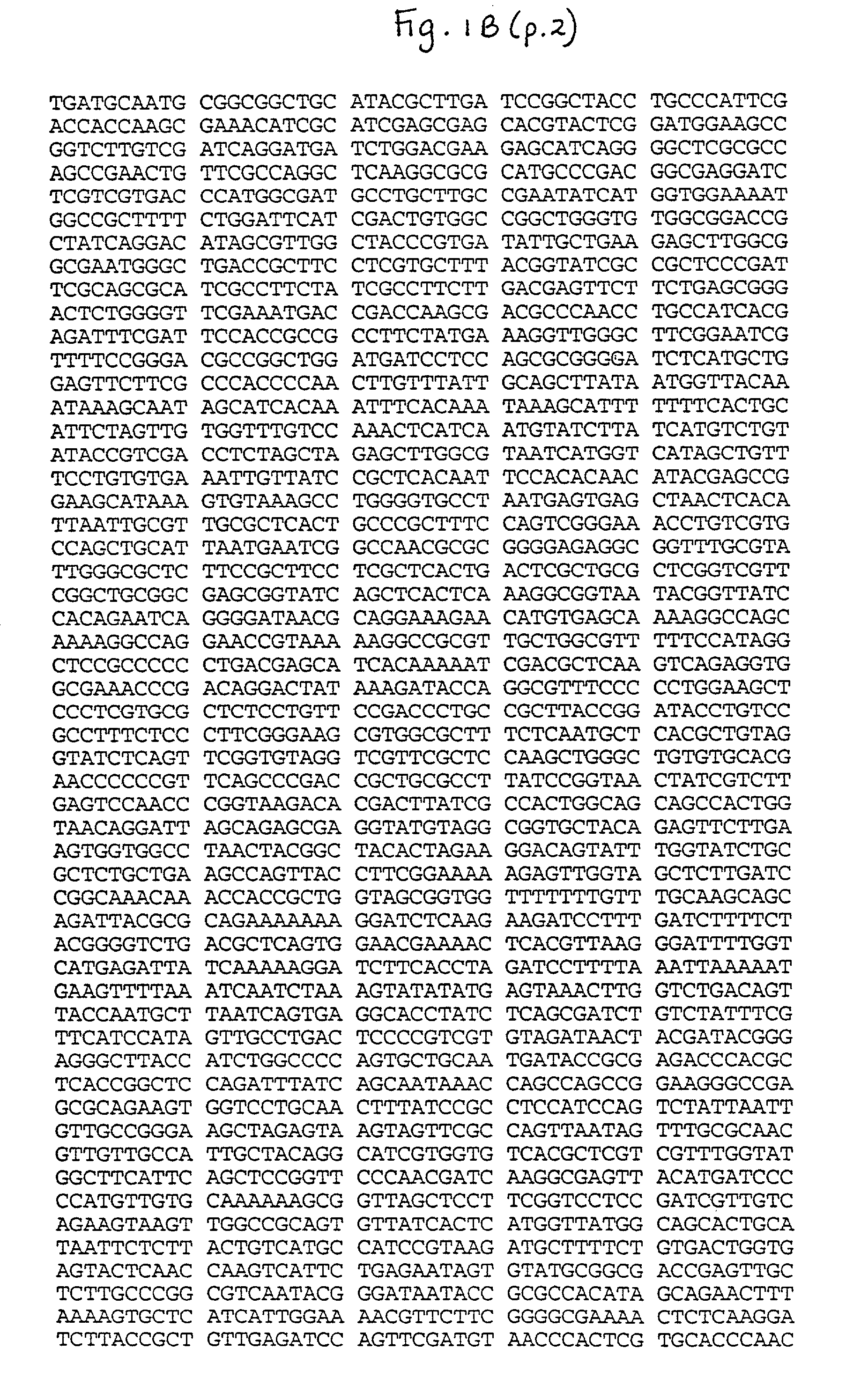Compositions and methods for administering pneumococcal DNA
a technology of dna and compositions, applied in the field of compositions and methods for administering pneumococcal dna, can solve the problems of insoluble product, difficult approach, and neonates and young children not making an immune response against polysaccharide antigen, and achieves the effects of maximizing the secretion of an epitope, maximizing b cell response, and maximizing t-cell respons
- Summary
- Abstract
- Description
- Claims
- Application Information
AI Technical Summary
Benefits of technology
Problems solved by technology
Method used
Image
Examples
example 1
[0095] Cloning and Expression of PspA
[0096] Using oligonucleotide primers LSM17 and LSM18, which were derived from the sequence of pspA from S. pneumoniae Rx1, polymerase chain reaction (PCR) was carried out on Rx1 genomic DNA by the method outlined in McDaniel et al. Microb. Pathogen. (1994), 17, 323-337. The sequence of LSM17 and LSM18 follow:
1 LSM17: 5'GCGGATCCGTAGCCAGTCAGTCTAAAGCTG3' LSM18: 5'GCGGAATTCCCATTCACCATTGGCATTGACTTTAT3'
[0097] The amplified fragment of pspA (encoding full-length PspA), was cloned into pGT41. The plasmid pGT41 contains a CMV (HCMV-IE) promoter and a portion of the gene that encodes RSVG such that when an in-frame fusion is made, the resultant fusion protein may be transported to and anchored in the mammalian cell membrane where it can be exposed to the host immune system.
[0098] pGT41 was constructed using the commercially available plasmed pcDNA3 (Invitrogen). pcDNA3 was digested with KpnI, and a fragment of rsvG was amplified, digested wtih KpnI and lig...
example 2
[0101] Immunization with pKSD2601 Expressing PspA
[0102] pKSD2601 was used to immunize BALB / c mice. An additional group of mice received pGT41, the vector alone with no pneumococcal DNA inserted, as a control. Experiments were done twice using groups of five mice. Mice received lingual injections of 50 ug of purified plasmid at weekly intervals for five weeks. At the end of the sixth week, mice were bled and the PspA specific serum antibody level of each mouse was determined; the date is shown in Table 1. The antibody concentration was determined by an ELISA, in which the microtitration plates were coated with purified PspA versus control plates coated with purified PspA from the PspA-mutant pneumococcal strain WG44.1. An anti-PspA MAb of known concentration was used as a standard for estimation of antibody concentration in the mice.
2TABLE 1 PspA specific antibody levels (ng / ml) in the serum of BALB / c mice immunized with a plasmid (pKSD2601) expressing PspA Immune Control Mouse Numbe...
PUM
| Property | Measurement | Unit |
|---|---|---|
| median time | aaaaa | aaaaa |
| median time | aaaaa | aaaaa |
| median time | aaaaa | aaaaa |
Abstract
Description
Claims
Application Information
 Login to View More
Login to View More - R&D
- Intellectual Property
- Life Sciences
- Materials
- Tech Scout
- Unparalleled Data Quality
- Higher Quality Content
- 60% Fewer Hallucinations
Browse by: Latest US Patents, China's latest patents, Technical Efficacy Thesaurus, Application Domain, Technology Topic, Popular Technical Reports.
© 2025 PatSnap. All rights reserved.Legal|Privacy policy|Modern Slavery Act Transparency Statement|Sitemap|About US| Contact US: help@patsnap.com



